Overview:
The United States of America is not only known for its modern cities and sprawling landscapes but also for its rich historical heritage.
From colonial settlements to battlefields and iconic landmarks, the country boasts a wealth of historical sites that tell the story of its formation and growth.
In this blog, we explore the top 15 historical sites in the USA that every history enthusiast should visit. Each of these sites holds unique significance, representing key moments in American history.
Table of Contents
1. Statue of Liberty, New York City
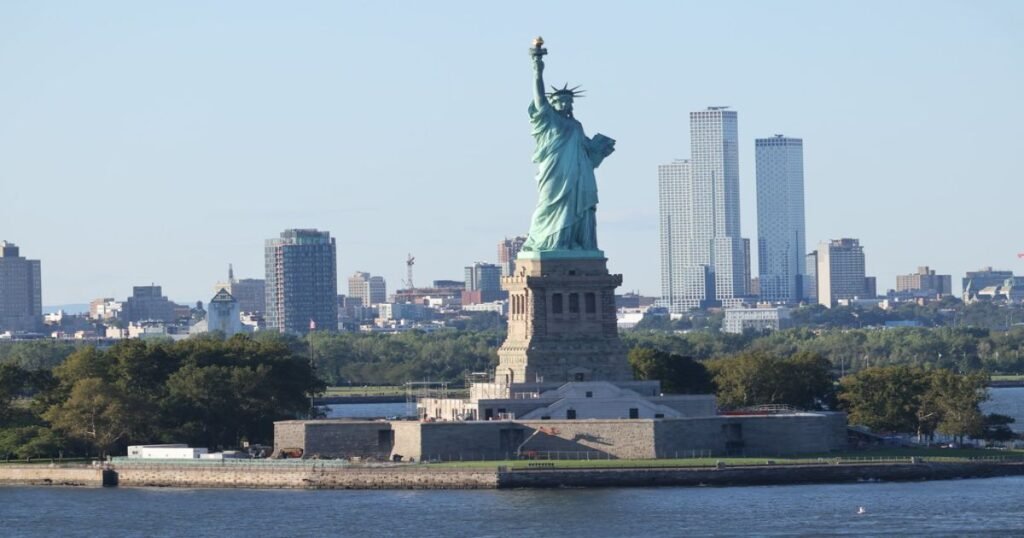
Standing tall in New York Harbor, the Statue of Liberty is an iconic symbol of freedom and democracy. Gifted by France in 1886, this colossal structure welcomes visitors arriving by sea and has become one of the most recognized landmarks worldwide.
Historical Significance: The Statue of Liberty represents hope and opportunity for immigrants arriving in America during the late 19th and early 20th centuries. It serves as a reminder of the close ties between France and the USA and symbolizes the country’s ideals of freedom and democracy.
Best Time to Visit: April to October, to enjoy pleasant weather and take a ferry ride around Liberty Island.
Travel Tips:
- Transportation: Ferries to Liberty Island depart from Battery Park in Manhattan and Liberty State Park in New Jersey.
- Accommodation: Stay options in Manhattan range from luxury hotels to budget hostels.
- Local Customs: Arrive early to avoid long security lines and enjoy unobstructed views.
2. Independence Hall, Philadelphia

Independence Hall in Philadelphia is where both the Declaration of Independence and the United States Constitution were debated and signed. This red-brick building is a key site in American history and a UNESCO World Heritage Site.
Historical Significance: The hall played a crucial role in the birth of the nation, hosting discussions and decisions that shaped the future of the United States. Visitors can see the room where the founding fathers made history, making it a must-visit for history buffs.
Best Time to Visit: March to November, when guided tours are available, and the nearby attractions are easily accessible.
Travel Tips:
- Transportation: Accessible by train, bus, and car, with parking options available nearby.
- Accommodation: Choose from hotels around Center City Philadelphia.
- Local Customs: Tickets are free but limited, so book in advance to secure a tour spot.
3. Mount Rushmore, South Dakota

Mount Rushmore is an enormous granite sculpture in the Black Hills of South Dakota. It features the faces of four prominent U.S. presidents—George Washington, Thomas Jefferson, Theodore Roosevelt, and Abraham Lincoln.
Historical Significance: Completed in 1941, Mount Rushmore symbolizes the birth, growth, development, and preservation of the United States. The monument honors these four leaders for their contributions to the nation’s history and principles.
Best Time to Visit: May to September, when the weather is suitable for exploring the outdoors and enjoying nearby hiking trails.
Travel Tips:
- Transportation: Best accessed by car; the nearest airport is in Rapid City, South Dakota.
- Accommodation: Stay at nearby hotels or lodges in Keystone or Custer.
- Local Customs: Attend the evening lighting ceremony for a memorable experience.
4. Gettysburg National Military Park, Pennsylvania
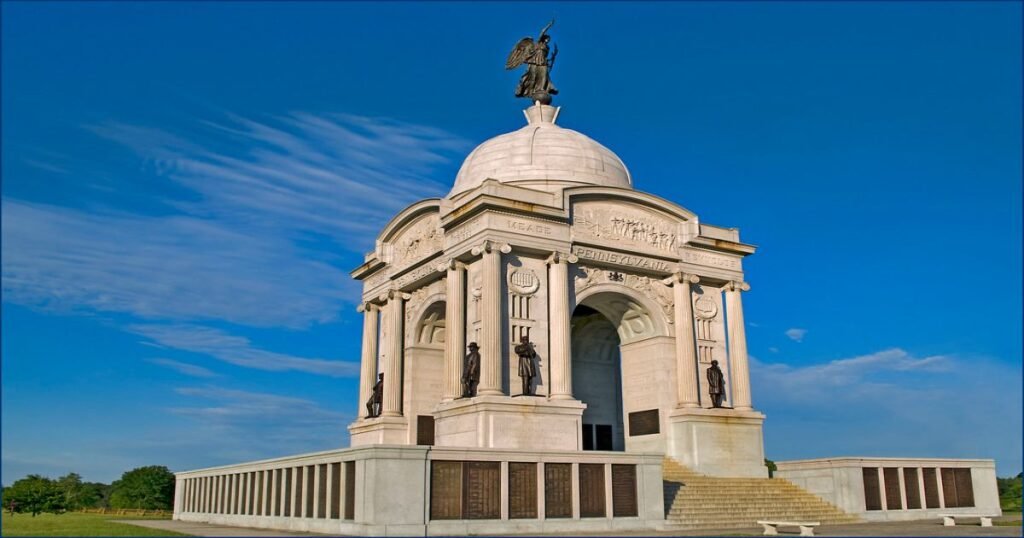
Gettysburg National Military Park marks the site of one of the most significant battles of the American Civil War. It was here that President Abraham Lincoln delivered his famous Gettysburg Address in 1863.
Historical Significance: The Battle of Gettysburg was a turning point in the Civil War, leading to a Union victory that set the stage for the preservation of the United States. The park preserves the battlefield and provides insight into the hardships faced by soldiers on both sides.
Best Time to Visit: April to October, when ranger-led tours and reenactments are frequently held.
Travel Tips:
- Transportation: Accessible by car, with ample parking and tour buses available.
- Accommodation: Choose from a range of hotels and inns in Gettysburg.
- Local Customs: Wear comfortable shoes for exploring the extensive battlefield and historical markers.
5. Alcatraz Island, San Francisco
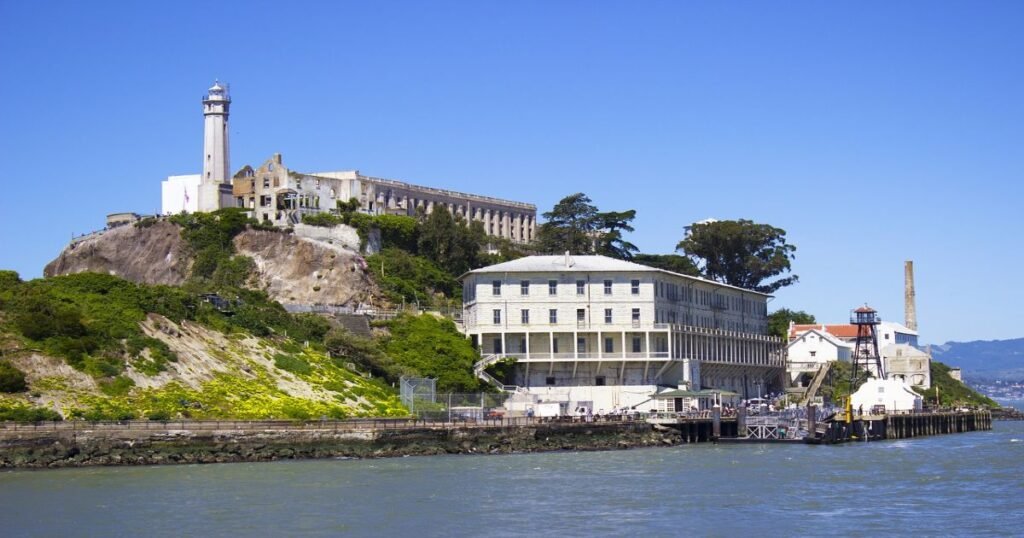
Located in the San Francisco Bay, Alcatraz Island is famous for its former federal prison that once held some of America’s most notorious criminals. The island now serves as a national historic landmark.
Historical Significance: Alcatraz served as a military fortification, a military prison, and eventually a high-security federal prison from 1934 to 1963. Notable inmates included Al Capone and the “Birdman of Alcatraz.” Today, it offers a glimpse into the harsh prison life and the many escape attempts.
Best Time to Visit: September to November, for mild weather and fewer crowds.
Travel Tips:
- Transportation: Ferries depart from Pier 33 in San Francisco.
- Accommodation: Stay options are available in downtown San Francisco.
- Local Customs: Book tickets well in advance, as tours often sell out quickly.
6. The White House, Washington, D.C.
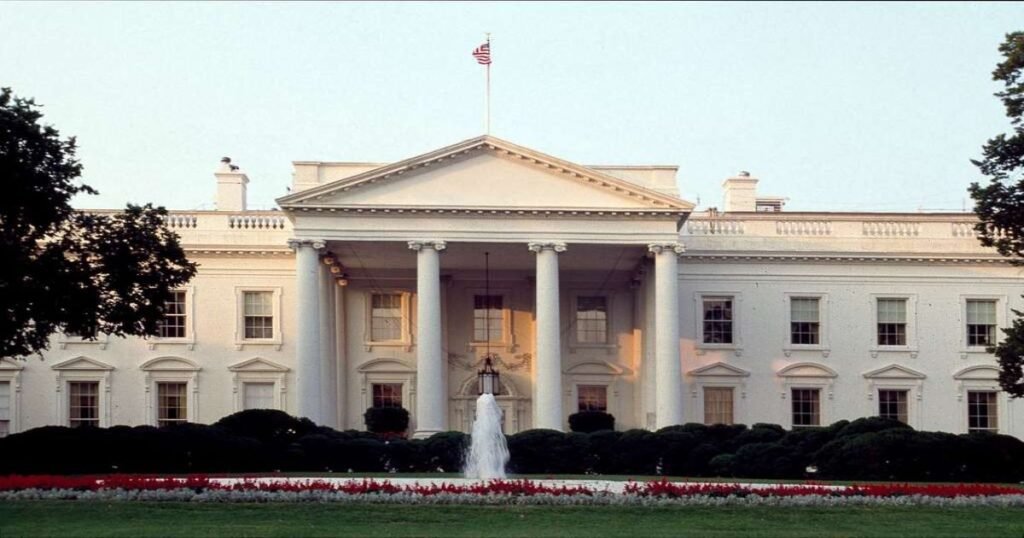
The White House, located at 1600 Pennsylvania Avenue, is the official residence and workplace of the President of the United States. It stands as a symbol of the U.S. government and leadership.
Historical Significance: Built in 1800, the White House has been the residence of every U.S. president since John Adams. It has witnessed numerous historic events, from presidential inaugurations to critical policy decisions that shaped the nation.
Best Time to Visit: March to June, when cherry blossoms are in bloom, adding a picturesque backdrop.
Travel Tips:
- Transportation: Easily accessible by metro, bus, or car in Washington, D.C.
- Accommodation: Stay options range from luxury hotels to budget accommodations in the city.
- Local Customs: Tours must be requested through a Member of Congress and require advance planning.
7. Boston Freedom Trail, Massachusetts

The Boston Freedom Trail is a 2.5-mile-long path that passes by 16 historically significant sites, including churches, meeting houses, and burial grounds, offering a journey through America’s revolutionary history.
Historical Significance: The trail tells the story of the American Revolution, from the Boston Massacre to the Battle of Bunker Hill. Each site along the trail provides a unique perspective on the struggle for independence.
Best Time to Visit: April to October, to enjoy guided tours and pleasant walking weather.
Travel Tips:
- Transportation: Accessible by foot or public transport from downtown Boston.
- Accommodation: Hotels and inns are plentiful in the Boston city center.
- Local Customs: Wear comfortable walking shoes and carry a trail map to explore at your own pace.
8. Liberty Bell, Philadelphia
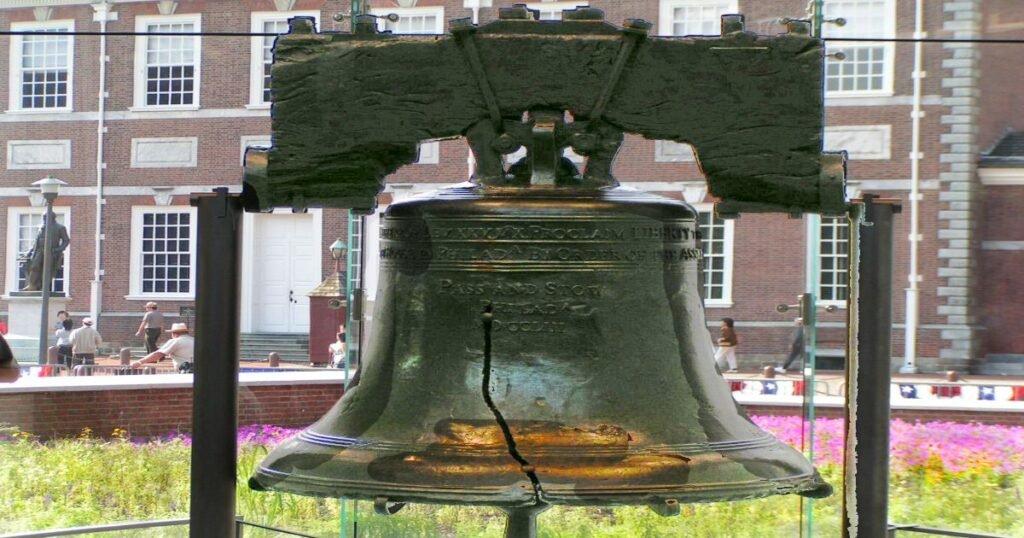
The Liberty Bell, housed in the Liberty Bell Center in Philadelphia, is an enduring symbol of American independence and freedom. The bell’s iconic crack makes it one of the most recognized symbols in the country.
Historical Significance: Commissioned in 1752, the Liberty Bell originally hung in the Pennsylvania State House (now Independence Hall). It was rung to mark important events, including the first public reading of the Declaration of Independence in 1776.
Best Time to Visit: March to November, when visitor centers and nearby attractions are open.
Travel Tips:
- Transportation: Accessible by foot or public transport from Independence Hall.
- Accommodation: Stay options are available in Center City Philadelphia.
- Local Customs: Take your time to read the historical plaques and watch the short film on the bell’s history.
9. Colonial Williamsburg, Virginia

Colonial Williamsburg is a living history museum and historic district that recreates life as it was in the 18th century. With restored buildings, reenactments, and period-costumed interpreters, it offers a unique opportunity to step back in time and experience colonial America.
Historical Significance: As the capital of Virginia from 1699 to 1780, Williamsburg played a crucial role in the political and social development of the American colonies. Many of the ideas that led to the American Revolution were first discussed in this city. Today, it stands as a well-preserved window into early American life.
Best Time to Visit: March to May and September to November, to enjoy moderate weather and fewer crowds.
Travel Tips:
- Transportation: Best accessed by car; the nearest airport is in Newport News/Williamsburg.
- Accommodation: Choose from colonial-themed hotels or modern lodgings nearby.
- Local Customs: Participate in interactive reenactments and ask interpreters questions to gain deeper insights.
10. Lincoln Memorial, Washington, D.C.
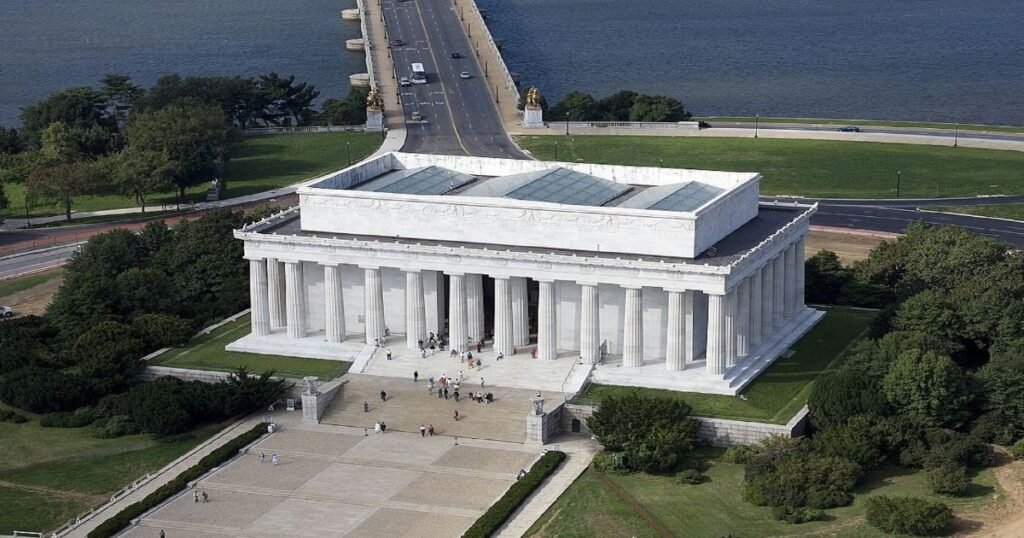
The Lincoln Memorial is a grand tribute to the 16th President of the United States, Abraham Lincoln. Situated at the western end of the National Mall, the memorial features a larger-than-life statue of Lincoln and inscriptions of two of his most famous speeches.
Historical Significance: Built to honor Lincoln’s role in preserving the Union during the Civil War and his work to end slavery, the memorial has become a symbol of unity and equality. It was also the site of Martin Luther King Jr.’s famous “I Have a Dream” speech during the 1963 March on Washington.
Best Time to Visit: March to June and September to November, when the weather is mild and visitor numbers are manageable.
Travel Tips:
- Transportation: Accessible by metro, bus, or on foot from other National Mall attractions.
- Accommodation: Numerous options are available in downtown Washington, D.C.
- Local Customs: Visit in the evening to see the memorial beautifully lit and enjoy a serene atmosphere.
11. Ellis Island, New York City
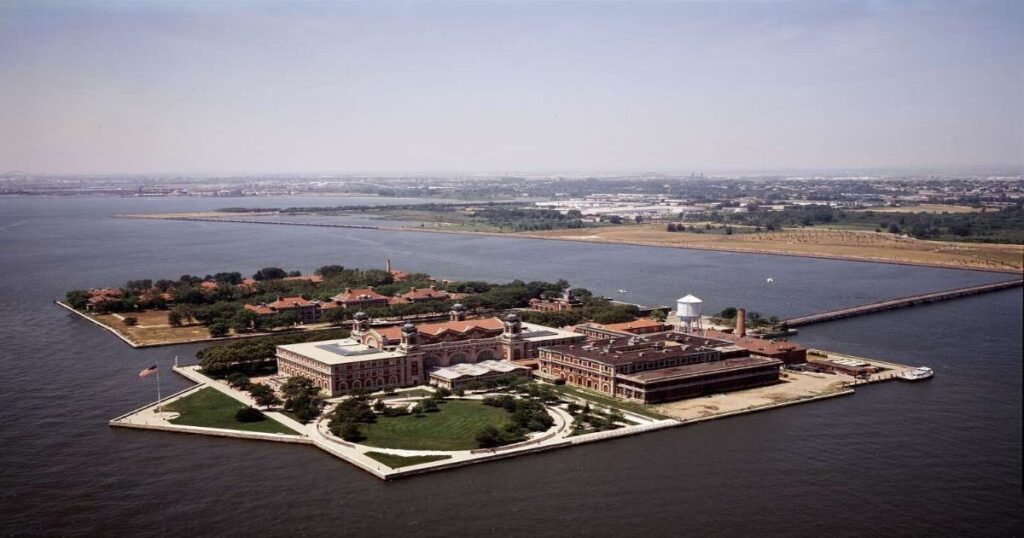
Ellis Island was the gateway for over 12 million immigrants entering the United States between 1892 and 1954. The Ellis Island Immigration Museum offers exhibits and artifacts that tell the stories of these new arrivals and the challenges they faced.
Historical Significance: Ellis Island symbolizes hope and new beginnings for millions of immigrants who sought a better life in America. The site preserves records and personal stories that highlight the diverse roots of the American population.
Best Time to Visit: April to October, for ferry trips with scenic views of New York Harbor.
Travel Tips:
- Transportation: Take a ferry from Battery Park in Manhattan.
- Accommodation: Stay in Lower Manhattan for easy access to the island.
- Local Customs: Explore the immigration records and family history research center to trace your own ancestry.
12. Mesa Verde National Park, Colorado
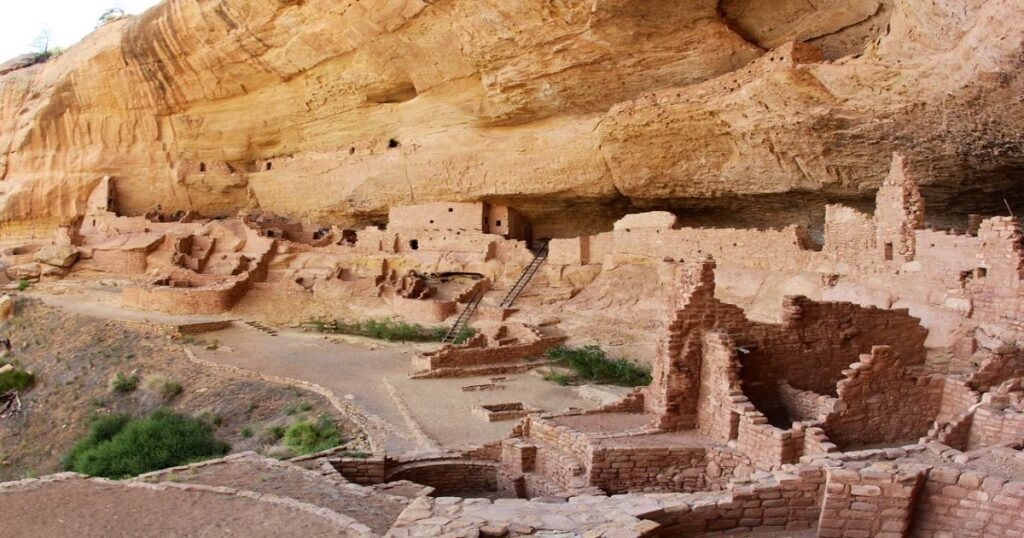
Mesa Verde National Park, a UNESCO World Heritage Site, is home to some of the best-preserved Ancestral Puebloan cliff dwellings in the United States. The park offers a glimpse into the lives of the Ancestral Pueblo people who lived in the region for over 700 years.
Historical Significance: The cliff dwellings, including the famous Cliff Palace, were constructed between 600 and 1300 AD. The structures reflect the ingenuity and resilience of the Ancestral Puebloans, who adapted to the challenging environment of the high desert.
Best Time to Visit: May to October, when guided tours of the cliff dwellings are available.
Travel Tips:
- Transportation: Best accessed by car; the nearest airport is in Cortez, Colorado.
- Accommodation: Stay in the park’s lodge or nearby towns like Cortez.
- Local Customs: Respect the site’s cultural sensitivity by not touching or climbing on the ruins.
13. Jamestown Settlement, Virginia

Jamestown Settlement is the site of the first permanent English colony in America, established in 1607. The museum and historical park recreate the early days of the settlement, with reconstructed ships, a colonial fort, and a Powhatan Indian village.
Historical Significance: Jamestown played a pivotal role in the early years of English colonization in America. It served as the capital of Virginia for nearly 100 years and was the setting for the dramatic story of Pocahontas and John Smith.
Best Time to Visit: April to June and September to November, for comfortable weather and full exhibits.
Travel Tips:
- Transportation: Accessible by car; the nearest airport is in Williamsburg.
- Accommodation: Stay in Williamsburg or nearby areas for convenience.
- Local Customs: Join a guided tour to hear in-depth stories about the settlement’s history.
14. The Alamo, San Antonio, Texas
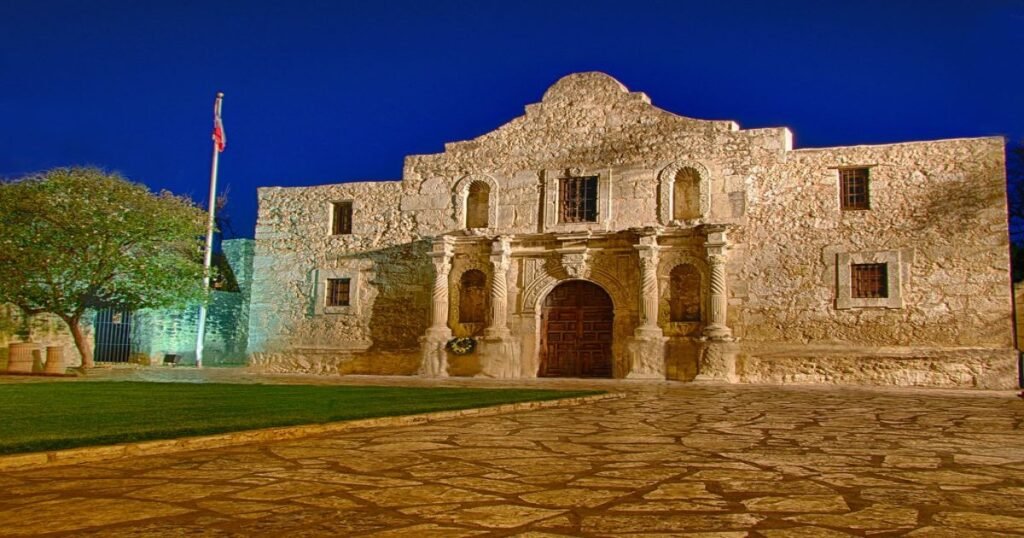
The Alamo is one of the most famous historical sites in Texas, known for the Battle of the Alamo in 1836. This former Spanish mission-turned-fortress played a key role in Texas’s fight for independence from Mexico.
Historical Significance: The Battle of the Alamo became a symbol of resistance and sacrifice when a small group of Texan defenders held out against a much larger Mexican force. The cry “Remember the Alamo!” became a rallying point for the Texas Revolution.
Best Time to Visit: March to May and September to November, to avoid the extreme Texas heat.
Travel Tips:
- Transportation: Easily accessible by car, bus, or on foot in downtown San Antonio.
- Accommodation: Numerous options are available in the nearby River Walk area.
- Local Customs: Respect the Alamo’s status as a historical shrine by observing a quiet, reflective demeanor.
15. Pearl Harbor National Memorial, Hawaii
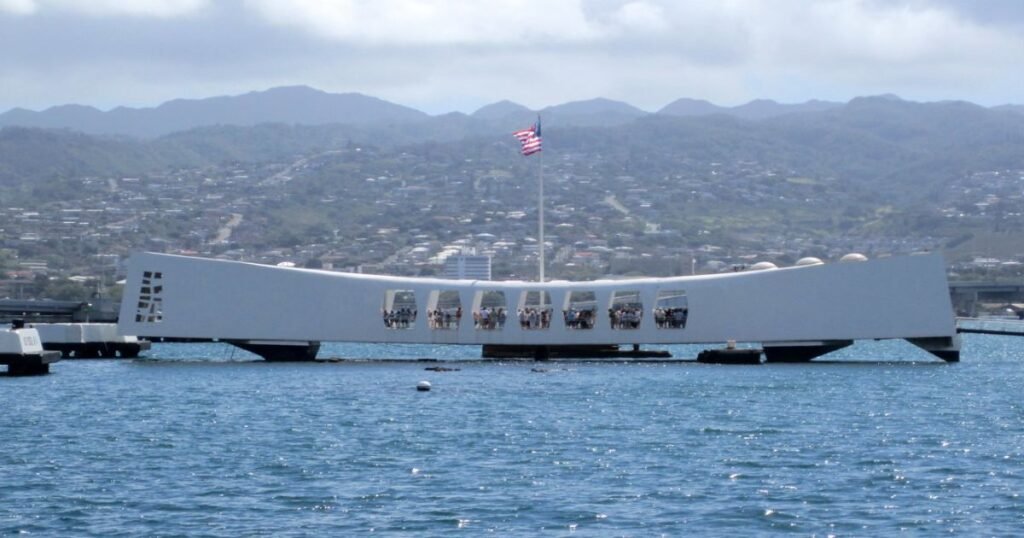
Pearl Harbor National Memorial honors the lives lost during the attack on Pearl Harbor on December 7, 1941. The site includes the USS Arizona Memorial, which sits above the sunken battleship where over 1,100 sailors and Marines were killed.
Historical Significance: The attack on Pearl Harbor led to the United States’ entry into World War II. The memorial serves as a solemn reminder of the sacrifices made and the resilience of the American people in times of crisis.
Best Time to Visit: March to May and September to November, when the weather is mild and visitor numbers are lower.
Travel Tips:
- Transportation: Accessible by car or shuttle bus from Waikiki. Book tickets in advance to avoid long waits.
- Accommodation: Numerous hotels are available in Honolulu and Waikiki.
- Local Customs: Show respect by speaking softly and refraining from taking selfies in solemn areas.
Also Read: 15 Best Adventure Destinations In The USA
Conclusion:
Exploring the top historical sites in the USA offers a deep dive into the nation’s past, showcasing its rich heritage, diverse cultures, and pivotal moments that shaped its identity.
From the founding of the colonies to battles that determined the country’s future, each site tells a unique story of resilience, sacrifice, and freedom.
FAQs
Q1: What are some other historical sites worth visiting in the USA?
Other notable historical sites include the Martin Luther King Jr. National Historical Park in Atlanta, the San Antonio Missions in Texas, and the Harriet Tubman Underground Railroad National Historical Park in Maryland.
Q2: How can I plan a trip to multiple historical sites across the USA?
Plan your route based on geographical proximity. For instance, you can combine visits to Washington, D.C., Philadelphia, and New York City. Book accommodations and transportation in advance, and research each site’s tour options.
Q3: Are guided tours available at these historical sites?
Most of these sites offer guided tours, which provide in-depth historical insights. It’s recommended to check each site’s official website for availability and to make reservations if needed.
Q4: What should I bring when visiting historical sites?
Wear comfortable shoes for walking, bring a camera for photos, and carry water and snacks. Respect each site’s rules and regulations, especially in solemn or sacred areas.
Exploring these historical landmarks will not only educate but also inspire you as you experience firsthand the places that shaped America’s story. Happy exploring!

